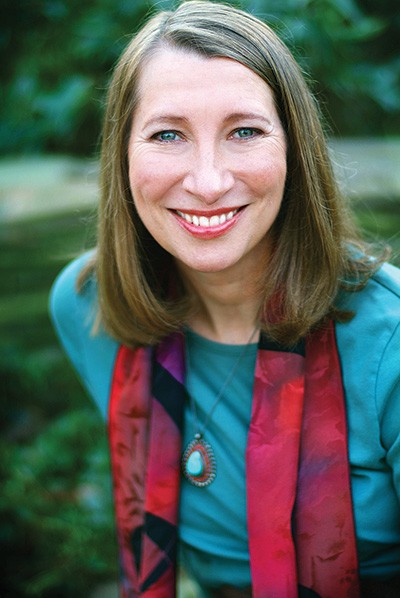At Hinge we have been studying Visible ExpertsSM, people who have attained high visibility and expertise in their industry, creating a personal brand that is recognizable industry-wide. We study them because we want to understand how they attained that status and what we can learn from them. This profile focuses on Sarah Susanka, a Visible Expert for residential architecture.

When she launched a firm with her partner at the age of 26, architect Sarah Susanka was already bucking the status quo. Unlike most major architecture firms, which made the bulk of their profits on major commercial projects, Sarah and her partner focused exclusively on the homeowner market. “There were very few large successful residential architecture firms doing single-family work,” she says. “This struck me as strange because I knew that most people were fascinated by house design. There had to be a way to make services available and reasonably priced to reach them.”
With the launch of her architecture firm, Sarah and her partner created a whole new business model, making a name for themselves at home and garden shows and other events where their target audience was likely to attend. “As well as exhibiting on the show floor, I also gave lectures at the Minneapolis Home & Garden Show, which became such a huge draw that they had to create a larger theatre space,” she says. “It started a trend. Before our presence there, architects wouldn’t consider exhibiting at a home show, but for many years now, the Minneapolis events have to limit the number of architects because there are so many who want to participate. It’s a great way to reach people trying to find information about house design services. Rather than the elitist attitude of let people come to you, I believe: go where the people are.”
The Book That Became a Movement

By 1996, the business Sarah helped found had grown to 45 employees and was one of the most sought-after residential architecture firms in Minnesota. Then in 1998 she wrote her best-selling first book, The Not So Big House. “The premise of the book is that houses are a reflection of ourselves,” Sarah explains. “By making your house express the things that you care about, it reflects you back to yourself more effectively. So instead of thinking about ‘resale value,’ you should ask: what do I want? Build what you care about, and your friends will want to hang out there because it’s an expression of you. It can be better rather than bigger, with dollars reapportioned out of square footage and into quality and character.”
The Not So Big House redefined the notion of “home” and became a cultural touchstone for a generation interested in sustainability, and smaller but better design for both home and community. Almost overnight, Sarah was launched into the spotlight, fielding media requests and being interviewed by heavyweights like Oprah, Charlie Rose, and Diane Rehm. “The book caused a huge shift in my life,” Sarah says. “I thought there would be an audience for it, but I didn’t realize how big. It was incredible to watch how, within 3 months of publication, I went from being known only in Minnesota to being known internationally.”
SEE ALSO: The Making of Visible Experts: A Path for Seller-Doers in AEC
Taking the Big Leap
Sarah had reached a crossroads. “It was an important moment in my life,” she explains. “I thought, I can either keep doing what I am doing, or I can take the microphone that I’ve been handed and become a spokesperson for what I have written about, and this new movement I believe in so strongly.” She decided to take the big leap, leaving her firm in 1999 to dedicate herself to traveling, speaking, and writing in support of the Not So Big movement.
The book gave Sarah a platform to expand her Not So Big design principles into facets of life beyond the home: communities, the environment, and even how we live our lives. Although she still designs houses—most of them showhouses where the public can check out her Not So Big design principles for themselves—she spends much of her time sharing her ideas through public speaking and writing. She has been featured on Good Morning America, CNN, NPR, HGTV, and This Old House, and has been called upon for her insights on culture and design by USA Today, The Wall Street Journal, and The New York Times. In between, she’s found time to write eight more books.
A Class of Her Own
In our research on Visible Experts, we found that specialization is critical to becoming a Visible Expert, and Sarah has recognized that truth in her own career. She explains it like this: “In order to be a Visible Expert, you have to stop caring what others will think of you. You have to break some rules, break out of what the world you are functioning in expects you to be. Unless you’re someone willing to think outside the box, you will be good at what you do, but you will not stand out beyond that convention.” This wisdom has been repeated by other Visible Experts in our research, from Tim Ash to Seth Godin. Bottom line? If you do what you believe in, you will automatically stand out from the crowd. Visibility comes from doing what you’re passionate about, and doing it without fear.
For others hoping to make their mark on the world, Sarah has some parting advice: “Whatever you focus on, that is what you become. If you focus on those nagging voices of doubt, that is what you become. So take the brakes off. It’s simply a matter of giving yourself the permission to say: I really want to do this. By giving voice to it, and taking the opportunities when they present themselves, it will happen.”
On Twitter or LinkedIn? Please take a minute to share The Visible Expert on Twitter and LinkedIn.

